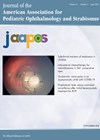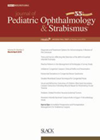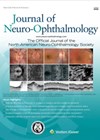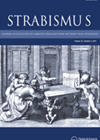
Journal Reviews
Impact of surgery for intermittent exotropia on the health-related quality of life of the child and parent
The authors present the analysis of the Intermittent Exotropia Questionnaire (IXTQ) completed by children and a parent in a previously reported randomised controlled trial comparing two surgical procedures. Children aged >5 years completed the Child IXTQ, and all parents completed...
Surgical outcome reporting for exotropic DRS
The authors report the surgical outcomes of patients with exotropic Duane’s retraction syndrome (DRS) in a retrospective study of 73 patients; 67 unilateral cases. Patients had a mean age at surgery of 14.11 years (range 2-33). The left eye was...
Normal reference values for the RETeval device
The purpose of this study was to provide normative data of full-field electroretinography (ERG) responses in the paediatric population using the RETeval device in healthy children with normal retinas. This was a prospective study of 38 eyes of 20 patients...
Outcomes of strabismus surgery for TED
This study investigated the surgical outcome according to the initial postoperative angle of deviation after strabismus surgery in patients with hypotropia and esotropia who had thyroid eye disease (TED). The study included 78 patients with mean age of 53.4 ±9.5...
Fixation target position for increased limbus measurement accuracy with AS-OCT
The authors intended to determine the optimal gaze fixation points for lateral rectus and medial rectus muscle insertions using anterior segment - optical coherence tomography (AS-OCT) compared with intraoperative measurements. They recorded 46 lateral and 36 medial rectus muscles from...
Comparison of two visual acuity test versions for different distances in a paediatric population
The authors present the findings of a study which aimed to determine whether using 2 metre and 4 metre retro-illuminated ETDRS charts are comparable in children. Order of testing was standardised (right eye, left eye, binocular), however different charts were...
Association of pendular waveform and retinal disorders
The authors aimed to evaluate the relationship between retinal disorders and pendular low amplitude high frequency components (PLAHF) waveform by collecting nystagmus eye movement recordings, electroretinography (ERG) and gene tests. Retinal disorders were diagnosed by clinical phenotype and genotype characteristics....
Prisms to treat AACE
Of 128 patients reviewed with binocular dysfunction, 30 (23.4%) had acute acquired concomitant esotropia (AACE). These patients complained of sudden onset diplopia at distance with no or moderate problems at near. There was no previous history of strabismus. Mean age...
Ametropia prevalence and types in China
This study aimed to determine the prevalence and type of ametropia in Yunnan multi-ethnic regions. The study included 24,296 students aged 7-12 years (90.99%) in the study area of five different regions. There were 51% males and 32.2% minorities. Ametropia...
Imaging findings for macular dysplasia in nystagmus
This paper reports the retrospective analysis of congenital macular dysplasia in patients with albinism, macular heterotopias, congenital aniridia, foveal hypoplasia, congenital macular coloboma and congenital retinoschisis. The study included 29 eyes of 17 patients. The authors report SD-OCT aids diagnosis...
Changes in axial length and refraction in young Chinese school children
The authors aimed to assess refractive error and axial length in children aged seven to eight years (grades 1-2) starting education in South China. The study reviewed 301 students and obtained data for analysis from 291 (50.2% female). Average axial...
SO tendon advancement for SO palsy
The authors report a series of 14 patients with unilateral superior oblique (SO) palsy having unilateral SO tendon advancement with or without other vertical muscle surgery. This was a retrospective study with mean age of patients of 16.7 years and...








